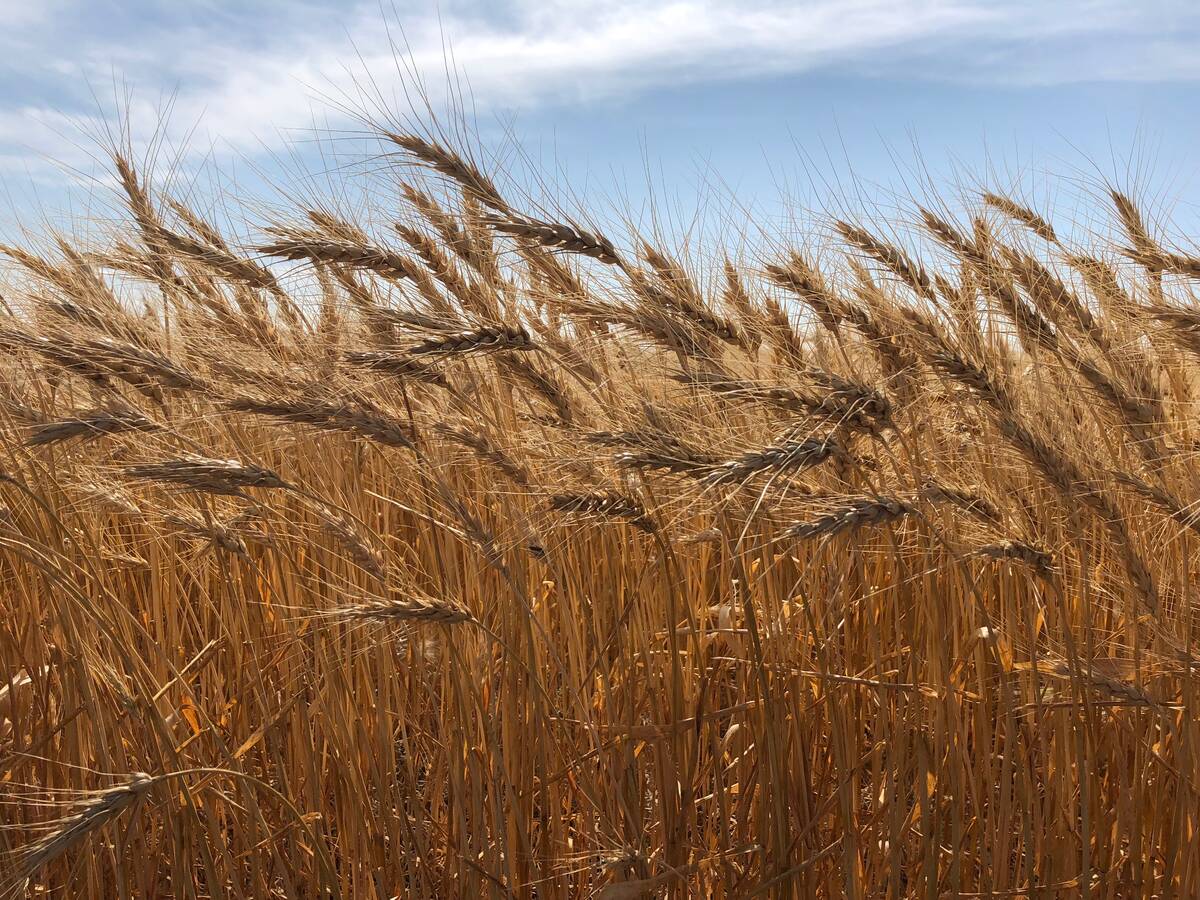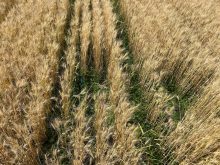A two-year study by the Alberta government and University of Alberta concluded granular urea is still the most effective nitrogen fertilizer source for spring wheat yield when compared to “alternative nitrogen fertilizers” — at least at the sites they studied.
Urea fertilizer, with nitrogen-use efficiencies nearing 60 per cent, is the dominant form of nitrogen (N) fertilization on the Canadian Prairies today.
In the project, granular urea was tested against two “alternative” granular fertilizers used in Europe and Australia — ammonium sulphate nitrate (ASN) and calcium ammonium nitrate (CAN) — to see whether they could provide Prairie spring wheat growers with a viable alternative source of N, said UAlberta’s Kris Guenette, the study’s corresponding author.
Read Also

Claas brings 1000 Series SP forage harvesters to Canada
In mid-August, Claas unveiled its new line of Jaguar forage harvesters at an event in Visalia, California, deep in the heart of that state’s dairy region.
WHY IT MATTERS: Facing a policy focus on reducing greenhouse gas emissions from nitrogen fertilizer, Prairie farmers need to know whether other N delivery systems offer anywhere near the same crop yields.
Also in the mix were a couple of N stabilizers (also called inhibitors), including DMPSA (3,4-dimethylpyrazole succinic acid) and urease inhibitor NBPT (N-(n-butyl) thiophosphoric triamide). Both were measured for yield.
Ultimately, none of the alternative treatments showed any more than marginal effects on wheat yield, although the stabilizers performed their primary jobs of reducing N loss from the soil as nitrous oxide (N2O) and preventing the loss of urea through volatilization, explained Guenette.

The emissions results — although not quantified — are in line with trials conducted in 2024 by Ducks Unlimited Canada (DUC) that showed nitrification and urease inhibitors are effective at reducing N2O emissions in winter wheat.
“The cool thing about it is, as soon as you add any form of inhibitor, you’re pretty much reaching that 30 per cent reduction in N2O emissions right off the hop,” said DUC winter wheat specialist Alex Griffiths in a 2024 Manitoba Co-operator story, referring to the federal government’s 30 per cent reduction target in N2O emissions on farms by 2030.
“We don’t need to cut our nitrogen rates by 30 per cent. You can just apply an inhibitor, and you’re probably going to be good.”
However, Guenette urged producers to weigh the costs of N stabilizers from both agronomic and environmental perspectives. He noted that their effectiveness is highly situation-specific and depends on factors such as precipitation, soil type, fertilizer strategy and crop genetics.
“They may have an environmental benefit, but they may not always have an agronomic benefit,” he said, adding growers shouldn’t expect N stabilizers to make a significant difference in spring wheat yield.

The setup
The project was conducted at two Alberta sites: Lethbridge (on irrigated dark brown chernozem) and Barrhead, 120 kilometres northwest of Edmonton (on dark grey luvisol).
The site choices were not random, but rather based on farming density and regional access to AAFC facilities, explained Guenette.
An unfertilized control was used in the first five treatments to compare results with ASN and CAN. Barrhead trials used Canada Western Red Spring (CWRS) wheat, while Lethbridge used Canada Western Amber Durum (CWAD), reflecting local cropping patterns.
Fertilizer rates at Barrhead were 89 pounds of nitrogen per acre and 36 pounds at Lethbridge.
The next four treatments compared untreated urea to urea treated with either a 3,4-dimethylpyrazole succinic acid (DMPSA) nitrification inhibitor, an NBPT urease inhibitor, or a dual urease and nitrification inhibitor.
Each treatment received phosphorus in the forms of 17.8 pounds of phosphorus pentoxide (P2O5) per acre in the seed row and the same amount plus 13.4 pounds of potassium oxide (K2O) in the mid-row band.
Few differences emerged between the fertilizer formulations, the inhibitor treatments and the wheat classes when it came to shoot N uptake. Similarly, total N uptake was much the same across treatments and soil types.
When averaged across wheat class and site years, there were no significant yield differences among any of the fertilizers, including untreated urea.
Deep-banding the secret weapon?
The lack of difference between treatments may have resulted from deep-banding fertilizer. This practice tends to reduce some volatilization and N-losses even without inhibitors. This is why urea and the alternative fertilizers performed similarly.
So how deep should fertilizers be banded? That was beyond the scope of the study, said Guenette, but generally-speaking, the deeper you band, the less risk you have of losing N fertilizer. He added that the ideal banding depth varies based on the farmer and their equipment. Some go as deep as four inches, others as shallow as two.
“It really depends on how deep they want to go.”
However, deep-banding has its risks.
“The further you place that band of fertilizer away from your seed or seed root, the longer it may take for that root to interact with it and therefore become available for the plant.”
Guenette is admittedly disappointed that nitrogen loss reduction — often viewed from an environmental perspective — was outside the scope of the project. He said there’s currently no clear economic incentive for producers to adopt practices that reduce nitrogen loss. He added that if environmental stewardship carried measurable value, producers might view these efforts differently.
“Perhaps this could be looked at in a different light instead of through the producer lens of purely agronomic outcome.”
— with files from Don Norman of Grainews
















